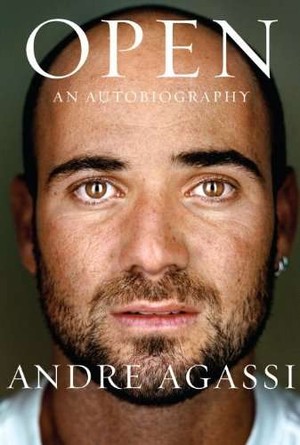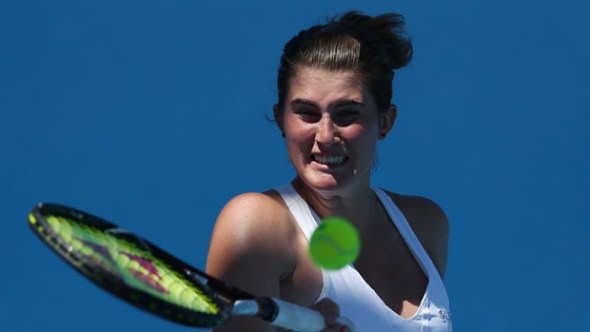The Lonely Road
7February 21, 2013 by Parveer Mann
Tennis is so damned lonely.
Those were the piercing words of tennis great, Andre Agassi in his appropriately titled autobiography, Open. He expresses the idea that tennis players exist on an island when they are in the heat of competition. You literally stand divided from your opponent by a net and are forbidden from talking to your coach or trainer. As a result, a player can only turn to themselves and talk out their issues and be their own sounding board. For those peering in, a tennis player may look slightly crazy in this situation and that only begins to describe the isolation of the tennis world.
Costs of Tennis
Tennis is a meritocracy. There are no guaranteed contracts or salaries like other sports, you have to win and succeed to help your earning power. It is this reality that causes a significant divide amongst the elite pro players and those outside the top 100. According to the Houston Chronicle, the average salary in 2012 for the top ATP and WTA players was $250,000 to $300,000. It represents a comfortable living by any means but it does come with some strings attached. The average cost to play on tour according to the USTA is $140,000 excluding the salaries of coaches or trainers.
Tennis is a global sport that hosts tournaments across the world. So it is not unusual for players to be playing one week in France and then travelling to Chile the next followed by Memphis. Those players outside of the elite have to use their earnings for their own flights and the travelling apparatus around them.
The costs can add up and that can often limit those who travel with you. A player may have to sacrifice travelling with a significant other or family so they can have their coach and trainer on the road. Some may not even have the resources to have even that support system with them. Add to that, the possible issues surrounding travel documents and language barriers, the experience can be exhausting. It is in these cases that Agassi’s description of a lonely world is illuminated the most.
Standing Alone?
At 22, Canadian tennis player Rebecca Marino announced she was taking a break from the game. She cited her battle with depression over the last few years and the toll it had taken on her. She noted that she had lived for long periods of time without her family and friends and it had affected her mental well-being. She also felt the open and often critical world of social media had been difficult to deal with over the course of her tennis career and travels
Excerpt from CBC:
Marino believes she has a thick skin to deal with such criticism, but at the same time said “social media has taken a toll on me,” adding it isn’t the main reason why she’s leaving tennis.
“I don’t think that I’m willing to sacrifice my happiness and other parts of my life [for] tennis,” she said. “There’s more to life than just tennis.
This post is not intended to suggest that athletes or tennis players should be coddled and protected from the reality many others face. Instead, I’m simply using this platform to applaud Rebecca for shining light on the issues and stigma surrounding mental health and cyber bullying. I hope she finds a peaceful resolution and can move forward with her promising life.
Category: ATP Tour, WTA Tour | Tags: Andre Agassi, ATP, Cyber Bullying, Mental Health, Open, Rebecca Marino, Tennis, Tennis Canada, WTA




Excellent piece on an issue that people weren’t really talking about before Agassi and now Marino. Do you think athletes in other individual sports like golf, boxing, MMA and even pro wrestling face similar challenges or are some concerns unique to tennis?
I’ll defer to what Andre said in his book that golf and boxing do have these moments but you are also steps away from a trainer or caddy. So some aspects are absolutely unique to tennis. If you are interested, Agassi’s autobiography is an excellent look into one tumultuous and triumphant life.
Interesting points – watching sports, it’s easy to forget that the people playing the game often face more challenges than just the ones being televised.
Re: the financial aspects, I think we tend to consider the winnings and endorsement deals of elite individuals, or what those in the “big money” sports are making, and figure they’re lucky (even accounting for the fact careers are short). But far more athletes are probably just trying to make ends meet, doing something they love.
It can be difficult to look beyond the elite athletes in any sport and find the athletes who are in heavy debt or living paycheque to paycheque simply pursuing the dream. For every NHLer, there are countless AHL or ECHL players barely making any money. In tennis, it’s easier to see the great divide as they are fighting for the same scraps.
I love Andre! Good for Marino for saying that, it’s not easy to say such a true thing 🙂
Andre is such a captivating figure. He has lived an extraordinary life.
[…] According to this recent Bloomberg article, ATP chief Chris Kermode has made it clear that the tour needs to increase payouts and other efforts to make the Challenger Tour more viable for players long-term. As the cost of professional tennis continues to rise, the Challenger Tour pool has only risen 31 percent in the last 10 years to $9 million in 2013. However, with over 150 Challenger tournaments that money is spread very thin compared to the PGA’s Web.com tour where purses are between $500K and $1 million for far fewer events. This growing money concern is only magnified by the current state of the game where it can take players many years before they are established in the more financially secure ATP World tour. […]